Sanyo PLV-Z700 LCD Projector Review
Sanyo PLV-Z700 LCD Projector
John gets to grips with Sanyo's PLV-Z700 - a Full HD LCD projector for around £1,000.
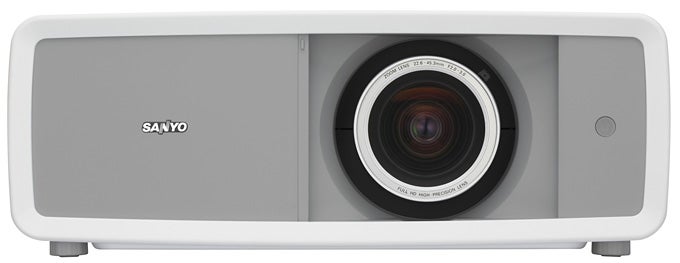
Verdict
Key Specifications
- Review Price: £1005.66
I’m going to start this review with a plea, if you don’t mind. And that plea is to all manufacturers to think twice before doing as Sanyo has with the PLV-Z700 and ditching ‘paper’ instruction manuals in favour of disc-only manuals. For while I appreciate the green heart that possibly lies behind the paperless manual concept, there really is no replacement for being able to have a hard copy of the instructions to hand when you’re setting the thing up. Plus I’m sure I’m not alone in tending to thumb through instruction manuals when I’m sat on a train or the toilet. Or, um, maybe I am… Anyway, moving swiftly on, as they say.
Despite its Full HD resolution, the Z700 is Sanyo’s new entry-level LCD machine, as reflected by a startlingly low price of £1,005.66. I can’t help but recall that InFocus’s X10 DLP projector also delivers a Full HD resolution for around the same kind of money. But if the Z700 can get close to the X10’s performance while also doing away with DLP technology’s rainbow effect interference, it should still come out looking like a serious bargain.
The Z700 both looks its money, and doesn’t. Which is to say that although it’s surprisingly big and reassuringly heavy for a budget machine, it’s also a bit bland thanks to some unimaginative rectangular sculpting and a slightly plasticky and drab matt white finish.
There is one thing I like about the Z700’s appearance, though: its promisingly large lens. It’s nice to discover, too, that this lens is protected by a sliding cover when you turn the projector off.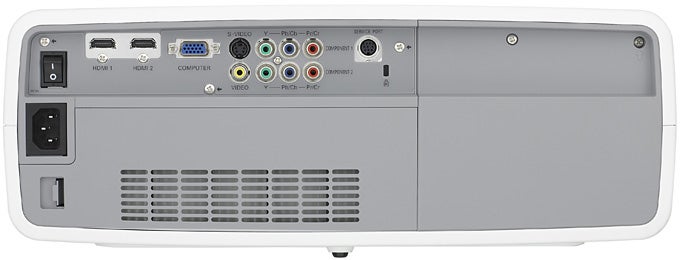
Setting the Z700 up really couldn’t be easier. For starters it’s got all the connections you could reasonably expect for its money, including twin HDMIs, two component video inputs, and a PC port.
Even better, though, is the superb amount of optical image shift available. Simple wheels down the lens’s right hand side enable you to shunt the picture up or down by as much as three full screen sizes, or left and right over as much as two screen sizes. This means you don’t have to place the projector directly in line with the centre of your screen, making it much more accommodating of weird shaped rooms than your average budget projector. As if all this wasn’t enough, the Z700 also offers a x2 optical zoom, which enables it to adapt itself to an unusual variety of room sizes as well as shapes.
The only time things start to get a little complicated – but mostly in a good way – is when you start delving into the Z700’s on-screen menus. For these contain a really remarkably long list of features for such a cheapo projector.
Particularly unexpected is the presence of a startlingly sophisticated colour management system. This actually allows you to manually choose a colour tone from the picture you’re watching using a movable ‘target’ cursor, and alter that tone’s colour phase, level and gamma elements via a simple menu list of alternative tones stretching out to either side of the original settings. Even JVC’s recently reviewed £3,500 HD350 didn’t manage to deliver colour management as sophisticated as this!
Other unexpected discoveries include five thematic image presets (of which we’d recommend the Brilliant and Creative Cinema options), five memory slots where you can store your own calibrated presets, manual gamma adjustment, unusually flexible lamp control should you want to sacrifice some brightness for better black levels/quieter fan noise, adjustable transient improvement, adjustable contrast improvement, an auto black stretch facility, three manual iris adjustments, a remarkably expansive and subtle iris range adjustment, and even the facility to customise the gamma settings. Phew.
The only pity with all this flexibility is that even after spending more time playing with all the options available than I can really afford, I still didn’t manage to come up with an image I could totally fall in love with.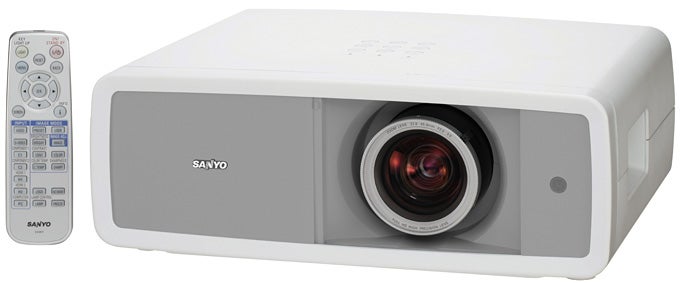
There are a number of reasons for this. The worst is the projector’s black level response. Sanyo quotes a very respectable contrast ratio maximum of 10,000:1, but this doesn’t seem borne out by the amount of the dreaded grey misting effect hanging over all the dark street shots during ”30 Days of Night”.
What’s more, no matter which of the Z700’s countless tricks I used to try and improve things, nothing ever really seemed to significantly dent the fundamental greyness issue. This stops the picture from looking as dynamic and contrast rich as I’d like – especially if you use settings based around the Creative Cinema 2 image preset that otherwise seems to deliver the best image.
Making the Z700’s black level issues that bit tougher to take is the fact that its pictures aren’t particularly bright – at least when you’ve got the image calibrated to a point where colours and noise levels are at their best. Had the projector’s peak whites and colours been driven out of the screen with more aggression by a better brightness performance, then the black level issue might have seemed less troubling. But as it is I just didn’t find my attention held by the Z700’s picture as aggressively as it has been by some other affordable projectors I’ve assessed recently.
I also didn’t find the Z700 entirely satisfying with standard definition material, thanks to the appearance of some jaggedness over high-contrast edges (though ironically these jaggies are actually well handled when the projector is deinterlacing 1080i sources), and signs of what looks like the grid-like structure of the projector’s liquid crystal grid over areas of detail like hairlines or bright on-screen text. Plus I felt that standard def skin tones looked rather waxy and distant standard def objects slightly soft.
At this point I should say that I feel like I’ve been rather harsh on the Z700. Maybe the amount of recent time I’ve spent in the company of really outstanding projectors further up the pricing tree has spoiled me. So it’s worth saying now that the problems identified do not make the Z700’s a bad projector by any means. Rather they’re arguably just typical of the sort of performance prices you have to pay for getting a Full HD projector on a shoestring.
And then there are its strengths to consider. These begin with the sharpness of its HD pictures. For while it lacks the colour finesse to deliver quite as much texture subtlety as some slightly more expensive projectors, for its money the amount of detail and noiseless clarity evident in shots like the one where our soon-to-be-ashes ”30 Days” hero stares across a bright frozen landscape is actually very impressive.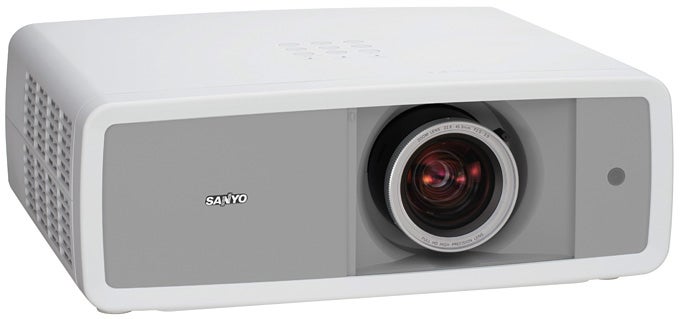
After a bad start, I also found myself rather taken with the Z700’s colours. The early problems come from some generally unhelpful factory colour presets, which find the primary colours looking more inclined to PC than video use, and skin tones looking peaky. But after spending quality time fiddling with the projector’s gamma and colour management tools, I managed to end up with a very credible palette. My only problem regarding colours is that I very occasionally spotted minor convergence/uniformity issues.
Motion is decently crisp and fluid for an affordable LCD projector, meanwhile, and the level of fan noise the Z700 produces is extremely easy to live with – even though it varies a little as the dynamic iris goes about its business.
Another rather surprising strength of the Z700 concerns its shadow detailing. Considering the picture is neither especially bright nor especially rich in black level, I wouldn’t have expected it to reveal any significant amounts of shadow detail in dark areas. But in fact there really is enough going on in the dark corners of the town of Barrow in ”30 Days of Night” to give the locations a genuine sense of depth and scale.
”’Verdict”’
I like Sanyo’s thinking with the PLV-Z700. For the world definitely needs a £1,000 or so Full HD LCD projector as a cheap alternative option for anyone who can’t live with the rainbow effect produced by InFocus’s aggressively price X10 and IN80 DLP models. However, while the Z700 is remarkably feature-packed for is money, and has aspects of its picture that have no right turning up on such an affordable machine, there are also picture areas – particularly black level response – where it falls tellingly short of some of its closest rivals. As a result, I ultimately didn’t find it quite as persuasive as the aforementioned InFocus X10 and IN80 DLP models, or Mitsubishi’s slightly more expensive HC5500 LCD model.
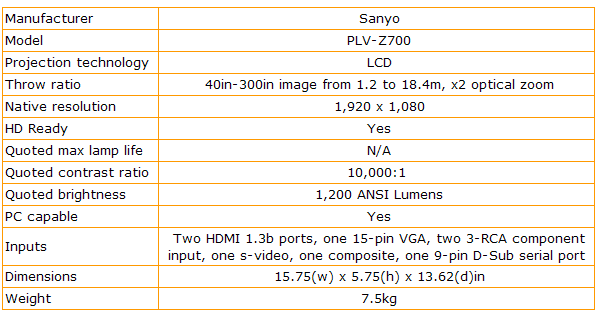
Trusted Score
Score in detail
-
Value 9
-
Features 8
-
Image Quality 7
-
Design 6

